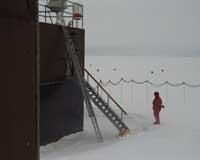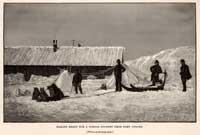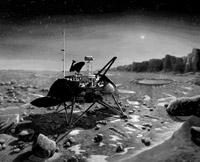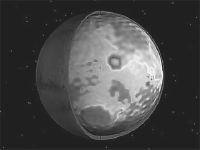From tomorrow, polar year
2007/02/28 Carton Virto, Eider - Elhuyar Zientzia

The International Polar Year is an initiative promoted and coordinated by the World Meteorology Association (WMO) and the International Council of Sciences (ICSU) to carry out scientific research at the poles for two years. It is the fourth time that in 125 years a project of this type has been launched, in which 63 countries and 10,000 scientists will participate, which plans to carry out more than 200 projects in the North and South Poles, with a total investment of 1,200 million euros.
The poles are interesting regions to investigate many of the Earth's global phenomena. Meteorological, oceanographic and biological processes taking place at the poles are of great importance in climate regulation, for example. In addition, very sensitive indicators are considered of the changes that occur in the environment, as are the mining canaries. They are the best places to investigate terrestrial magnetism and have an adequate atmosphere to perform astronomical observations. They are also very useful to investigate history, since they retain records of the terrestrial past trapped in the ice.
For this polar year, research has focused on six main areas: the environmental situation of polar regions; the understanding of past changes and the prediction of futures; the relations between polar and global processes; the limits of science in polar regions; the observation of Earth and space from the poles; and the sustainability of circumpolar societies. The organization has wanted to highlight for the first time in the context of global warming and climate change.
For the first time, since the previous polar year has been half a century. This is a rare initiative: the first polar year was held in 1882-83, fifty years for the second and twenty-five for the third in 1957-58. Then, the increase in the average temperature of the planet was not the protagonist of the scientific agenda.

The idea of the polar year is mainly due to the explorer and scientist Karl Weyprecht. He was one of the leaders of the North Pole expedition of the Austro-Hungarian Weyprecht empire in 1872-74. In that expedition hundreds of scientific data were collected, but Weyprecht saw clear that the data collected independently had a very limited use and that forces had to be united to understand meteorological and geophysical phenomena. Upon his return, he proposed "to put aside unprofitable competition for mere geographical discovery" and to launch "coordinated expeditions of nations towards scientific research."
The proposal took a few years to be carried out, but in 1882 12 countries jointly organized 15 expeditions to the poles: 13 North Pole and 2 South Pole. Weyprecht died in 1881 and could not see it materialized, but the proposal to work together is alive 125 years later.
Working together and coordinating is always a good strategy, not just at the poles. However, taking into account the hardness of the conditions at these two ends of the Earth, it can be said that it is also obligatory. It is said that the participants of the first two polar years could spend less than ten percent of time on science, as the rest did to survive.
Published in Berria.

Gai honi buruzko eduki gehiago
Elhuyarrek garatutako teknologia





